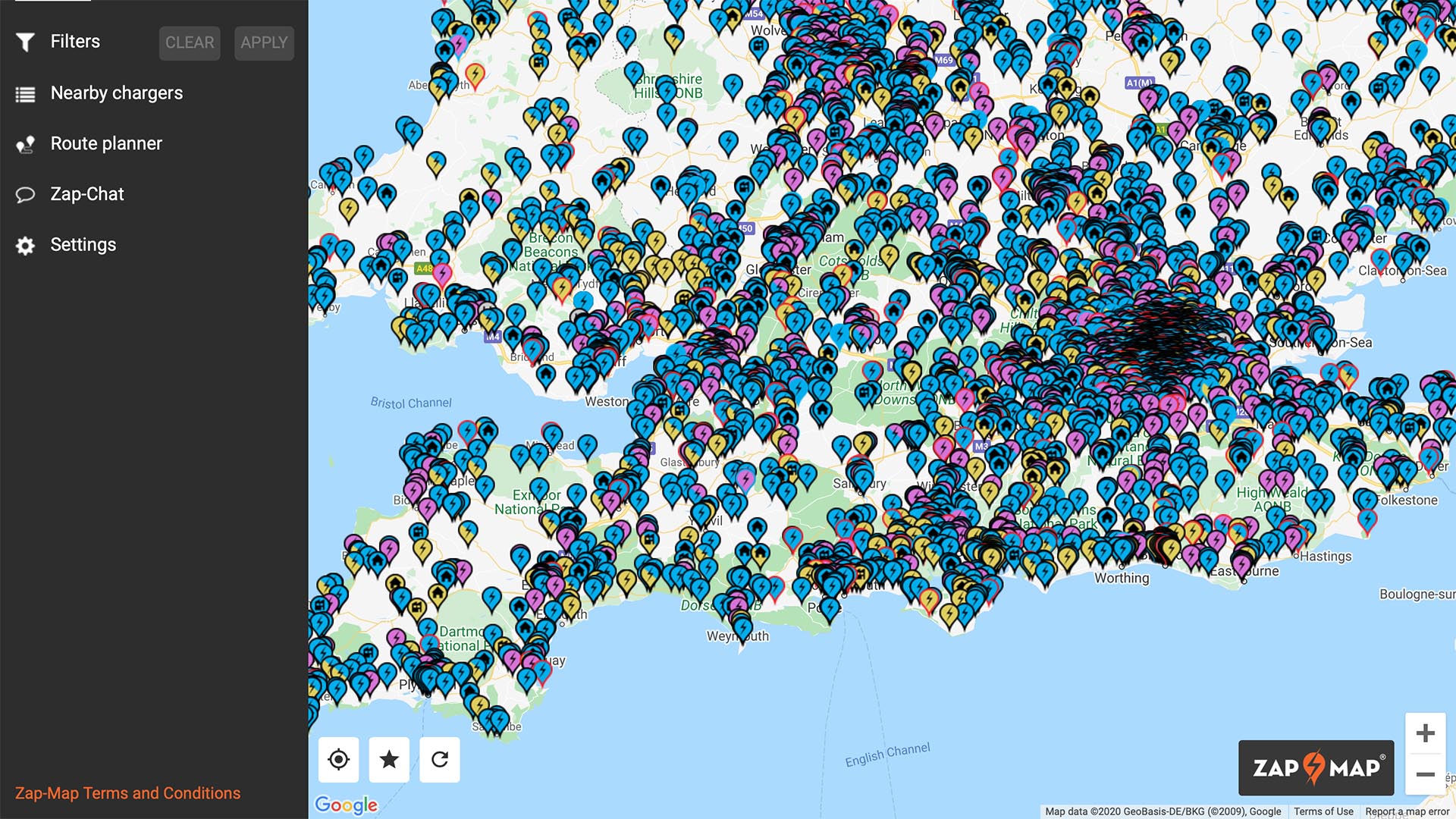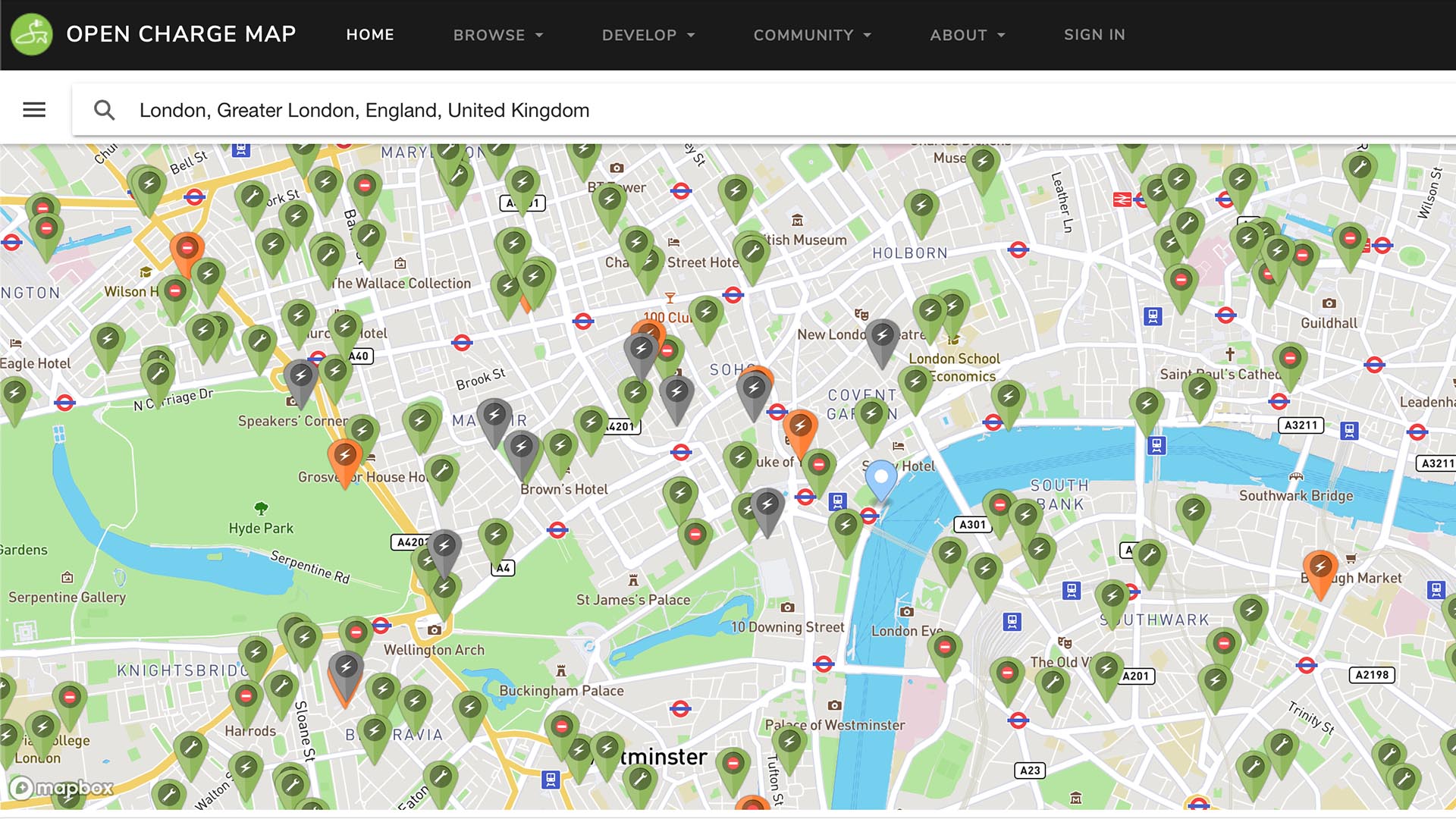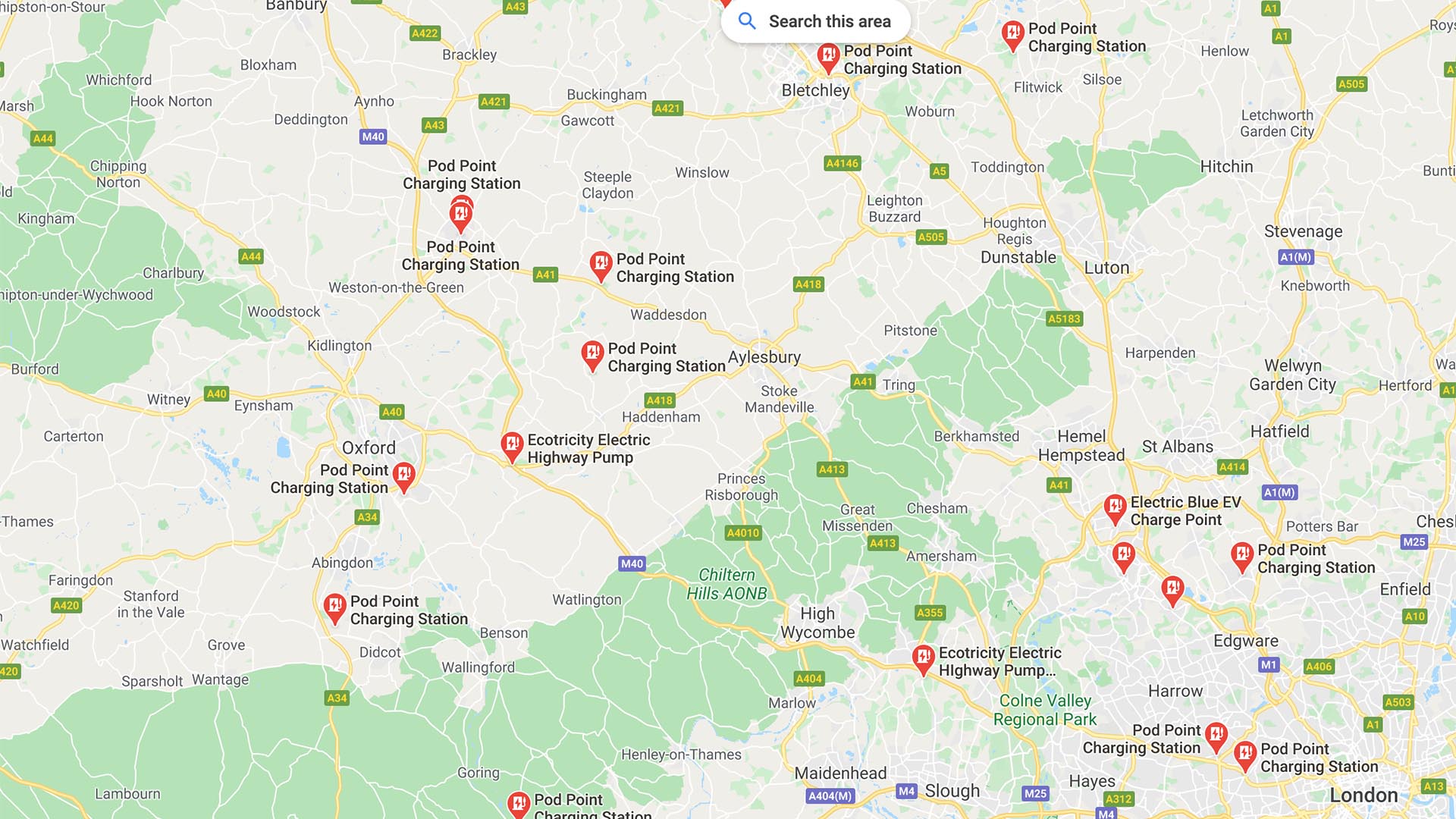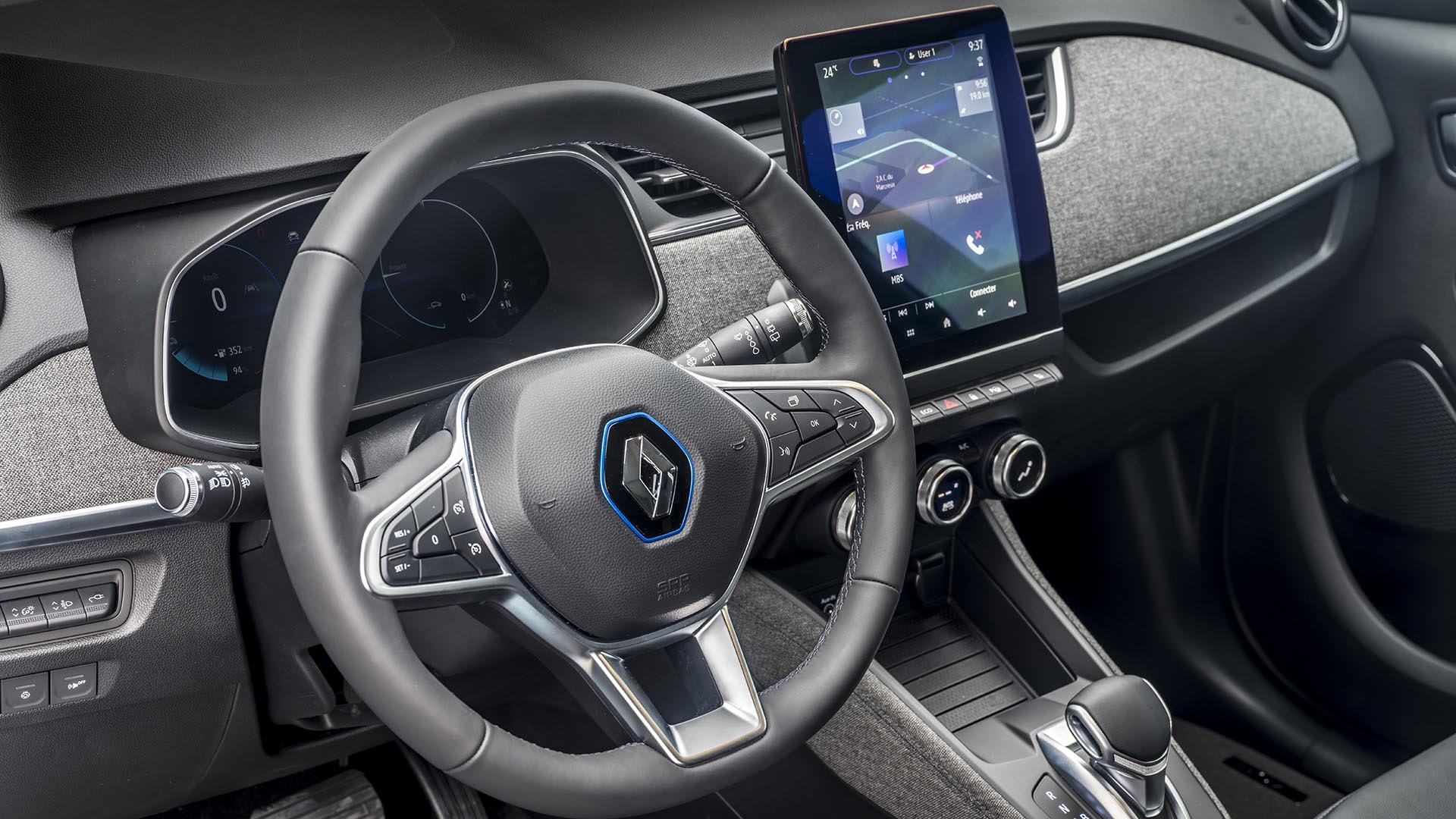The number of electric car charging points across the UK is growing by the day, particularly in the more populated parts of the country.
At last count in February 2024, according to Zap-Map, there were 87,421 charging connectors in total, spread across around 57,290 EV chargers nationwide.
As we move towards the phase-out of petrol and diesel cars from 2035, the UK government’s aim is that nobody will be more than 30 miles from a rapid charging station by 2025.
So, how do you locate your nearest electric car charger?
Zap-Map

One of the first places to start, especially if you are considering buying an electric car, is the Zap-Map website. Its map of charging points shows the full extent of the UK charging network.
It’s not too dissimilar to the sight that greets you when you use one of those aircraft tracking apps to view flights surrounding major international airports. The picture in the south east looks particularly crowded (see above).
The interactive map allows you to zoom in using a city, town, village or postcode, then there are several filters you can use to narrow the search. These include connector types (rapid, fast and slow), charging network (Ionity or BP Chargemaster, for example), location type and whether payment is required.
Any problems with the charging network are likely to be reported by Zap-Map users, which gives it a community feel – and could save you wasted time driving to a defective charger. The map is also available as an app on both Apple and Android smartphones, plus Zap-Map has a version on Google Assistant that uses voice commands.
Open Charge Map

The Open Charge Map app, available for Apple iOS and Android phones, is a good alternative to Zap-Map. Crucially, it’s a global resource, so it will come in handy if you’re planning a road-trip abroad with your electric car.
Again, you can search via a city, town, village, postcode or zipcode, and there’s a useful comments section that allows users to record their experience with the charging point.
The map will even tell you if the charging point is operational, although we wouldn’t want to rely too heavily on this function.
Google Maps

Google Maps also has the ability to locate electric car charging points. Not only can you find your nearest charger – or points along a chosen route – you also have the ability to add the plug used by your electric vehicle into the preferences.
Do so and you’ll only see charging locations that are compatible. Six types of plug are covered: J1772, CCS (Combo 1), Type 2, CCS (Combo 2), CHAdeMO and Tesla.
Using in-car navigation

Many electric cars allow you to locate your nearest electric car charger via the dashboard infotainment system and/or a connected phone app. For example, the Renault Zoe uses TomTom data to offer information on traffic delays, the weather and charging locations.
Meanwhile, Tesla charging stations can be viewed via these cars’ navigation systems and by using the Tesla ‘Find Us’ map. All Teslas have a built-in Trip Planner, which provides a route to your destination, taking into account the Supercharger stations along the way.
Most affordable EVs, such as the Mini Electric and Vauxhall Corsa-e, now offer a find-a-charger facility, and the ability to locate a charger on the move will only become more commonplace in future.
Ideally, of course, your nearest electric charging point should be at home. Install a wallbox at your property if possible, as this will provide a much faster and safer charge than a plug socket – and allow you to take advantage of cheaper domestic electricity rates.
ALSO READ:
What are the pros and cons of an electric car?
What is electric car preconditioning and why should I use it?


[…] Finding a charger […]
[…] software calculates real-world energy use via the sat-nav and directs the driver to the nearest charge point. It’s claimed to be accurate to within 0.5 percent of […]
hybrid cars would be the best thing because they are less polluting to the environment..
[…] new survey reveals that electric car drivers want public charging points to offer better hospitality and retail facilities […]
[…] is a worthy rival to the default Tesla Model 3. The ‘Kia Charge’ card offers access to numerous public chargers, too – although Tesla’s Supercharger network remains the biggest and […]